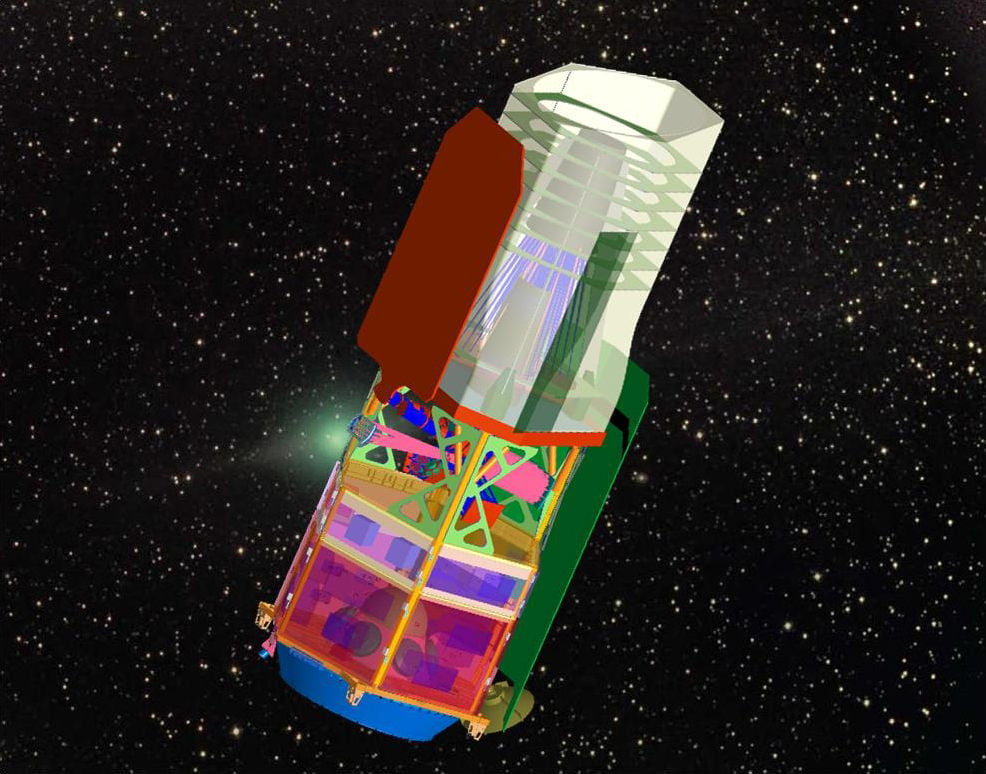[/caption]
NASA will be getting two unused space surveillance satellites from the US's National Reconnaissance Office, which could possibly be used to search for dark energy. In articles in the
Washington Post
and the
New York Times
, NASA and NRO officials revealed the two unused and not-fully-built satellites are available for NASA to use as they see fit. While the satellites don't have astronomical instruments and are still in a warehouse, they do have 2.4-meter (7.9 feet) mirrors, just like Hubble, with a wider field of view and a maneuverable secondary mirror that makes it possible to obtain better-focused images.
"This is a total game changer," said David N. Spergel of Princeton, quoted in the
New York Times
, who is co-chairman of a committee on astronomy and astrophysics for the National Academy of Sciences.
Reportedly, the NRO contacted NASA in 2011 about the two spy satellites. Since taking over as head of the NASA Science Directorate early this year, former Hubble repairman John Grunsfeld has been working with scientists and other NASA officials to quietly study the possibility of using the two satellites as "repurposed telescopes."
Originally designed to look at Earth for surveillance, the two telescopes could be turned to look at the heavens instead, as the National Reconnaissance Office said they no longer needed them for spy missions. Why two such spy telescopes were under construction and then scrapped is not clear.
Described as not fully built and some parts being in "bits and pieces," NASA will have to decide on how they should be used, build additional instruments, launch them, and support the operations.
Reportedly, Grunsfeld and his secret team have come up with a plan to turn one of the telescopes to investigate the mysterious dark energy that is speeding up the expansion of the universe.
NASA officials stressed that they do not have a program or a budget to launch even one telescope at the moment, and that at the very earliest, under favorable budgets, it would be 2020 before even one of the two gifted telescopes could be ready for a mission.
The
Washington Post
asked Grunsfeld whether anyone at NASA was popping champagne, and he answered, "We never pop champagne here; our budgets are too tight."
In the latest decadal survey the astronomical community had suggested a dark energy telescope as its top priority in astronomy and astrophysics, but the lack of funding – along with huge cost overruns by the James Webb Space Telescope -- made it seem like such a telescope would be an impossibility.
The two telescopes could possibly be used for the proposed
WFIRST project
, which seemingly was not going anywhere with the latest budget proposal or as a 'scout' for the JWST.
"It would be a great discovery telescope for where Webb should look in addition to doing the work on dark energy," Spergel said in the
Washington Post.
Astronomers will be discussing the possibilities at a meeting at the National Academy of Sciences held on today in Washington, D.C. and how they could turn the two gifted telescopes into official missions.
Read more in the
Washington Post
and the
New York Times.
 Universe Today
Universe Today
